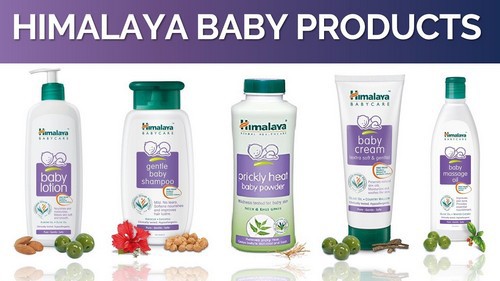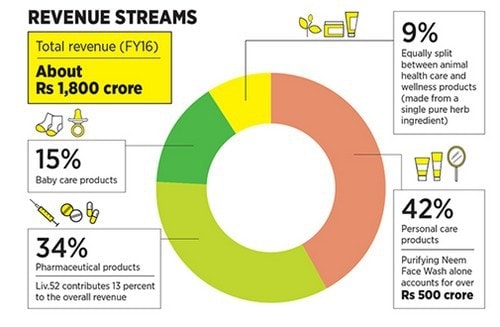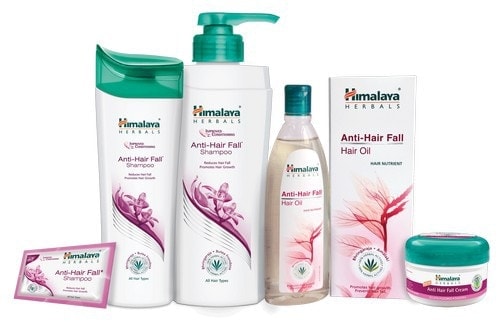It all started in 1930 when the idea of contemporizing the Ayurveda by Mr. M. Manal gave birth to the company Himalaya. It opened its first office at foothills of Himalaya in Dehradun in the year 1932, since then the company has been promoting and distributing Herbal Ayurvedic products across the globe.
In the year 2016 company has rechristened its logo as “Himalaya, since 1930”, in order to create the global identity communicating the rich legacy of the brand and history of over 86 years.
Table of Contents
Segmentation, targeting, positioning in the Marketing strategy of Himalaya–
Himalaya has the bouquet of healthcare products which are segmented based on the customer groups and usage such as personal care products for customers of all ages, nutrition and wellness products which are health supplements for deficiency of minerals & vitamins primarily for children & old age consumers, mother care, and Baby care products.
Since the brand have the presence in different product categories, therefore it uses differentiated targeting strategy so that although the product categories are defined by the brand the offerings will differ based on the geographic region the product is catering to.
Curious about Himalaya’s impact on the global herbal market?
With a presence in over 90 countries and a portfolio of more than 500 products, Himalaya continues to be a leader in the herbal wellness industry (Source: Himalaya Corporate Profile, 2021).
The company employs over 300 researchers dedicated to innovating and enhancing their product offerings, underscoring their commitment to combining traditional Ayurveda with modern science (Source: Himalaya Official Website, 2021).
Himalaya has positioned itself as an herbal brand giving health & wellness of the customer prime importance while doing business and formulating products best suited to the changing times.
Marketing mix
SWOT analysis
Mission-“To make herbal wellness a part of every home”
Vision- “Not available”
Tagline-“Since 1930”
Competitive advantage in the Marketing strategy of Himalaya–
Increasing share of other business:
In the year 2004, 97% of the revenues of the company were coming from Ayurveda medicines with the revenue of about ?200 crores at that time which over the years have increased to? 1800 crores with only 34% being contributed by the Ayurveda medicines and rest from other businesses of the company.
Rich Portfolio of offerings:
The herbal wellness company & drugmaker has more than 300 products across categories such as face washes, toothpaste, shampoos, pain-relief balms, body lotions, soaps, lip balms, ayurvedic drugs for humans and animals as well as nutrition products. In some of the product categories, it gained first-mover advantage like in products such as lip balm, face washes etc. with herbal benefits.
BCG Matrix in the Marketing strategy of Himalaya-
The company operates in the business segments such as Personal care, Wellness & nutrition products, Pharmaceutical products, and Animal Health.
Himalaya launched the personal care segment in 1999 with brand name as Ayurvedic concepts which later on renamed as Himalaya Herbals. The segment commands 42% market share with lip care and face cleansing among top offerings and is, therefore, is Stars in the BCG matrix.
Liv.52 the leading producer of a pharmaceutical portfolio with ?250 crores is among the top 10 selling drugs in India. The other offerings of the brand in this business are not that successful and are, therefore, is the question mark in the BCG matrix.
The wellness & nutrition segment is Star in the BCG matrix as the brands have approx 250 products with a global presence.
Distribution strategy in the Marketing strategy of Himalaya–
The Company have shifted its manufacturing facility from Mumbai in 1975 to the outskirts of the Bangalore city. The 80,000 square feet EU-GMP-certified manufacturing and R& D facility is spread across the 28-acre land. The standardization of manufacturing process of the company has helped it in spreading its wings in more than 91 countries globally.
The products of the company are distributed through a mix of channels such as authorized distributors, retailers, E-commerce websites, Medial stores and Pops & mom stores. The products of the company are prescribed by more than 400000 doctors globally.
Brand equity in the Marketing strategy of Himalaya–
The brand has been synonyms of Ayurveda and is known for head-to-heal herbal healthcare products. The brand has won awards & accolades over the years such as Guardian Health & beauty Awards 2015, Watsons HWB 2015, Best foot care cream award by Women’s weekly, Beauty Hall of Fame award (2015) for Lip Balm. The company had operating revenue of $ 28 billion (2017).
Himalaya have its official Blog which not only helps the brand in promoting its products but also helps in creating awareness about health hazards in the changing time and medicinal benefits of the herbal medicine offered by the company.
Competitive analysis in the Marketing strategy of Himalaya–
Most of the companies operating in Ayurvedic & herbal industry have strong Backend of researchers and recommending doctors to which Himalaya is not an exception. The company has more than 290 researchers who do clinical and lab testing of the offerings on regular basis in order to provide distinctive and competitive product in the market.
The company competes with the companies such as Dabur, Reckitt Benckiser, Zandu, Patanjali and many more.
Market analysis in the Marketing strategy of Himalaya–
Himalaya operates in the market where several companies are offerings similar kind of generic products, the only differentiation is the benefits and the branding that the companies do to make the offerings more acceptable in the market.
Continuously it has been striving & venturing into new segments of the business to lessen its dependency on pharmaceuticals segment and broaden its revenue from personal care, Wellness & nutrition, and other FMCG products.
Customer analysis in the Marketing strategy of Himalaya –
The customer of the company are from all the age groups starting from infants for whom there are baby care products i.e. baby kits & diapers, moms/children/ Old age customers there are wellness and nutritional products, pharmaceuticals products for all age groups of customers, and Personal care products.
Customers of the brand are inclined towards Ayurveda and products which don’t have side effects use the products of Himalaya as it is safe and efficacious.
Liked this post? Check out the complete series on Strategies



this article is really wonderful.Can you provide indian companies revenue generaton data through export of ayurvedic products for last 4-5 years. please. thanks.
Very good article Sir . i liked very much
why don’t u try about Pestel analysis of each company?
need more information about how the marketing of products is organised or done in the babycare